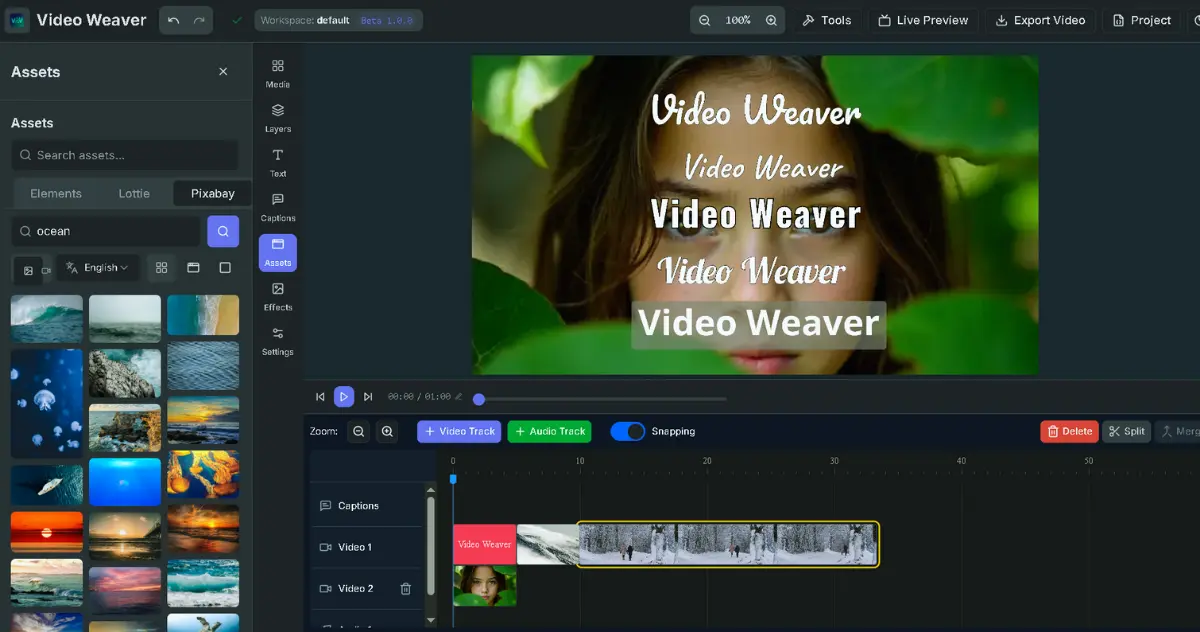Ali Qwen3-VL's New Members Arrive: How Do the 2B and 32B Models Redefine the Performance Ceiling of Visual AI?
The Ali Tongyi Qianwen Qwen3-VL family welcomes a major update with the launch of two new models: 2B and 32B. From lightweight applications on mobile phones to high-performance inference comparable to GPT-5mini, what does this update bring to developers? This article provides an in-depth analysis of the new models’ dual ‘Instruct’ and ‘Thinking’ modes and explores their amazing performance in visual understanding benchmark tests.
In the race of artificial intelligence, the competition of model parameters seems endless. But recently, a more interesting trend has emerged: how to find the perfect balance between “performance” and “efficiency”? The Ali Tongyi Qianwen (Qwen) team is clearly well-versed in this.
Recently, the Qwen3-VL family announced the addition of two new members—2B and 32B dense model sizes. This is not just a numerical change, but a precise strategic layout. It means that whether it is for resource-constrained mobile devices or complex visual tasks that require powerful computing power, developers now have more suitable choices.
Why is this update important? Because it solves a core pain point: how to make AI run in more places without sacrificing too much accuracy?
A Dual Strike of Lightweight and Performance: The Art of Positioning 2B and 32B
The two sizes released this time precisely target the two extreme needs of the market.
On the one hand, Qwen3-VL-2B-Instruct and Qwen3-VL-2B-Thinking are born for the “edge.” Imagine running an AI that can understand complex images directly on a mobile phone, smart camera, or even a robot terminal, without relying on cloud servers. This is revolutionary for privacy protection and real-time response. The 2B model is small in size, but it can provide amazing visual understanding capabilities on extreme edge devices, which opens the door for developers to experiment and deploy quickly.
On the other hand, Qwen3-VL-32B-Instruct and Qwen3-VL-32B-Thinking are aimed at the high-performance battlefield. It is not the largest model, but it may be one of the most “cost-effective” models at present. According to official data, with only 32B parameters, it has achieved results comparable to larger models on the market (even up to the 235B parameter level) in multiple fields. This means that enterprises can obtain top-level AI vision capabilities with lower computing power costs.
“Fast Thinking” and “Slow Thinking”: An Analysis of the Dual Modes of Instruct and Thinking
Perhaps the most striking aspect of this update is the introduction of two model variants for different application scenarios. This is a bit like the “fast thinking” and “slow thinking” systems of the human brain.
Instruct Model (Fast Thinking): The core of this version is “efficiency” and “execution.” Its response speed is extremely fast and its execution is stable, making it very suitable for scenarios that require real-time feedback, such as online customer service dialogue systems, or occasions where AI needs to quickly call external tools to solve problems. It is like a well-trained assistant who can act immediately upon hearing a command.
Thinking Model (Slow Thinking): This is a more interesting development. The Thinking version has the ability to “think by looking at pictures.” When faced with complex visual content, it does not rush to give a simple answer, but can perform long-chain reasoning. This is particularly critical when dealing with challenging tasks that require multi-step analysis. For example, when analyzing a complex engineering drawing or interpreting a video full of details, the Thinking model can demonstrate a deeper level of understanding.
Benchmark Test: The Strength Behind the Data
So much has been said, but how is the actual performance? Let’s look at the data.
In a number of authoritative benchmark tests, Qwen3-VL-32B has shown strong competitiveness. According to the official comparison data (see the chart at the beginning of the article), in key areas such as STEM, General VQA, and OCR, the performance of the 32B model not only surpasses that of previous generation products, but also outperforms strong competitors in the market, such as GPT-5mini and Claude 4 Sonnet, in multiple projects.
Particularly noteworthy is its performance on OSWorld. OSWorld is a benchmark for testing the ability of AI agents to operate in a real computer environment. Qwen3-VL-32B’s excellent results here suggest its huge potential in automated workflows and intelligent agent applications in the future. This is not just about “understanding” pictures, but about being able to “execute” tasks based on visual information.
A Boon for Developers: Powerful Tools at Your Fingertips
For the AI community, the most powerful model is of little value if it cannot be used easily. The Ali Tongyi team clearly understands this.
Currently, these new models have been opened on mainstream platforms such as ModelScope and Hugging Face. This means that developers and researchers around the world can immediately download, experience, and integrate them into their own projects. Whether you want to add image recognition capabilities to a mobile app or build an enterprise-level application that can read complex reports, the new members of Qwen3-VL provide ready-made and powerful solutions.
This not only expands Ali’s product line in the field of artificial intelligence, but more importantly, it provides more possibilities and a higher starting point for the visual language understanding applications of the entire industry.
Frequently Asked Questions (FAQ)
Q1: What are the main differences between Qwen3-VL-2B and 32B? How should I choose? A: The main differences are in model size and application scenarios. The 2B version is extremely lightweight and suitable for running on resource-constrained edge devices such as mobile phones and IoT devices, emphasizing low latency and privacy. The 32B version provides more powerful inference and visual understanding capabilities, and is suitable for server-side processing of complex tasks, deep image analysis, or commercial applications that require high accuracy. Please make your choice based on your computing resources and task difficulty.
Q2: What is the “Thinking” model, and how is it different from traditional visual models? A: The “Thinking” model introduces a “slow thinking” mechanism similar to that of humans. Traditional models usually go directly from image to answer, while the Thinking model, when faced with complex problems, will first perform internal long-chain reasoning, gradually analyze the clues in the image, and then give the final answer. This makes it perform better when dealing with complex visual tasks that require logical reasoning.
Q3: In what aspects does Qwen3-VL-32B outperform GPT-5mini? A: According to benchmark test data, Qwen3-VL-32B’s scores in areas such as STEM (Science, Technology, Engineering, Mathematics) related visual difficult problems, General VQA, and difficult text recognition (OCR) and Agent operations (such as OSWorld) are better than or equal to those of GPT-5mini and Claude 4 Sonnet, demonstrating a very high cost-performance ratio.
Q4: Where can I try or download these new models? A: Ali Tongyi has released these models on mainstream open source model communities. You can directly visit the Qwen repository on Hugging Face or ModelScope to download and try them out. The official team usually also provides corresponding documentation and experience links to help developers get started quickly.




